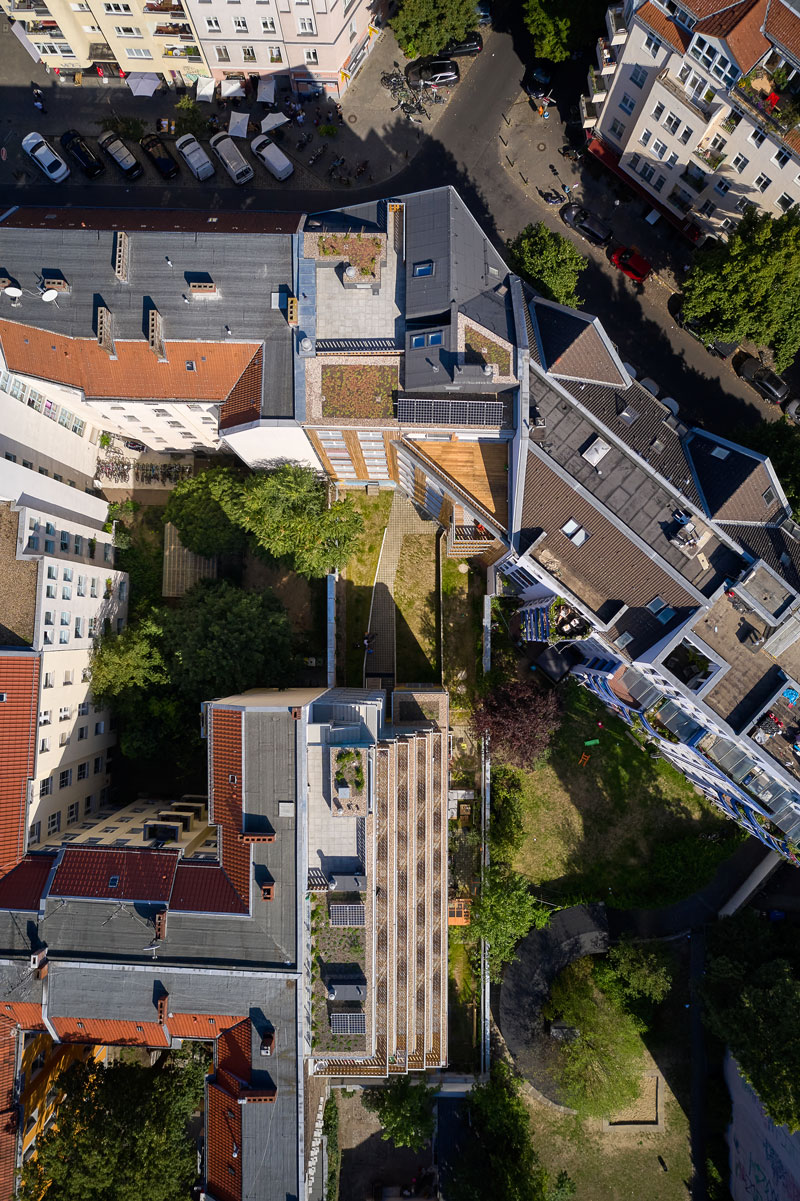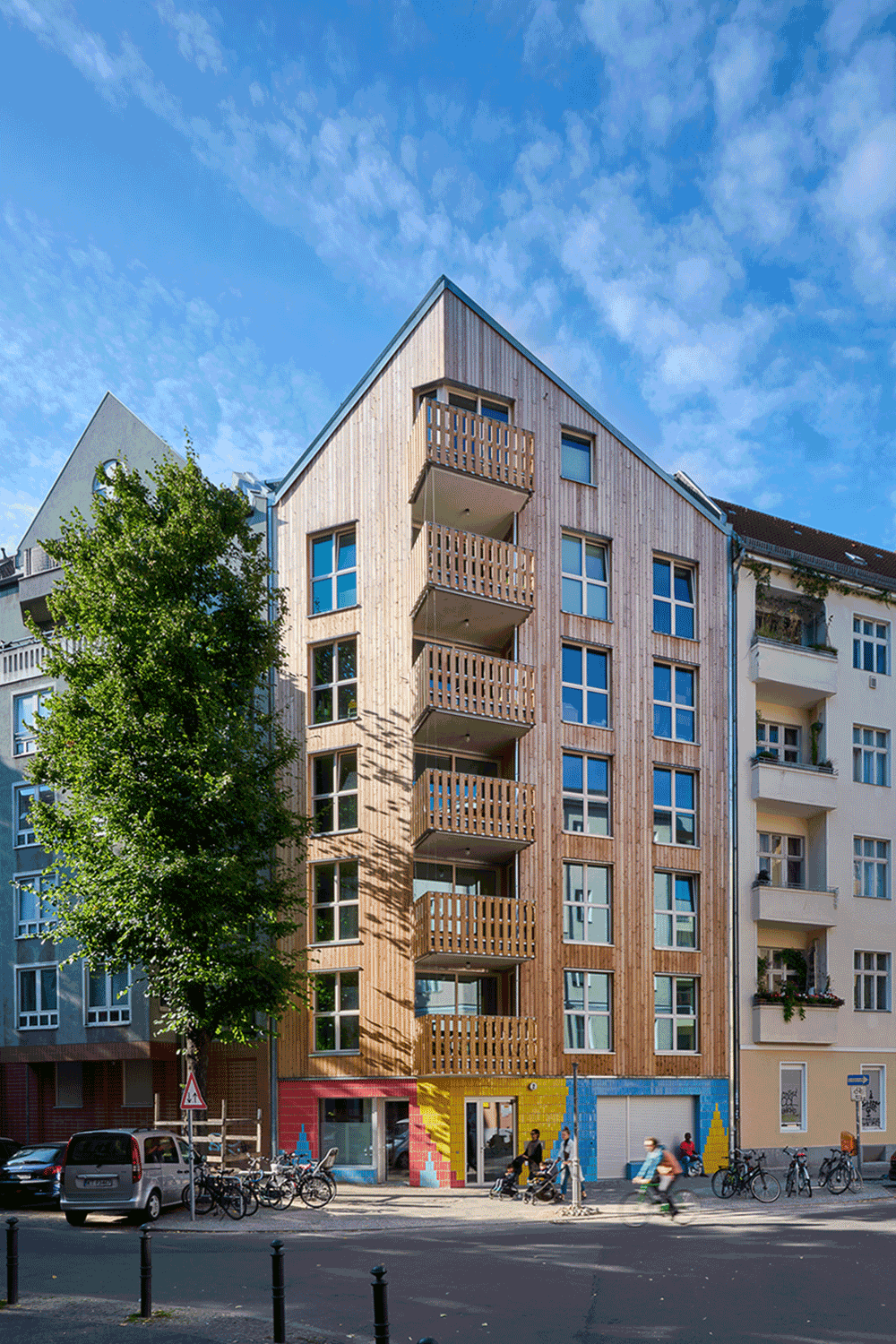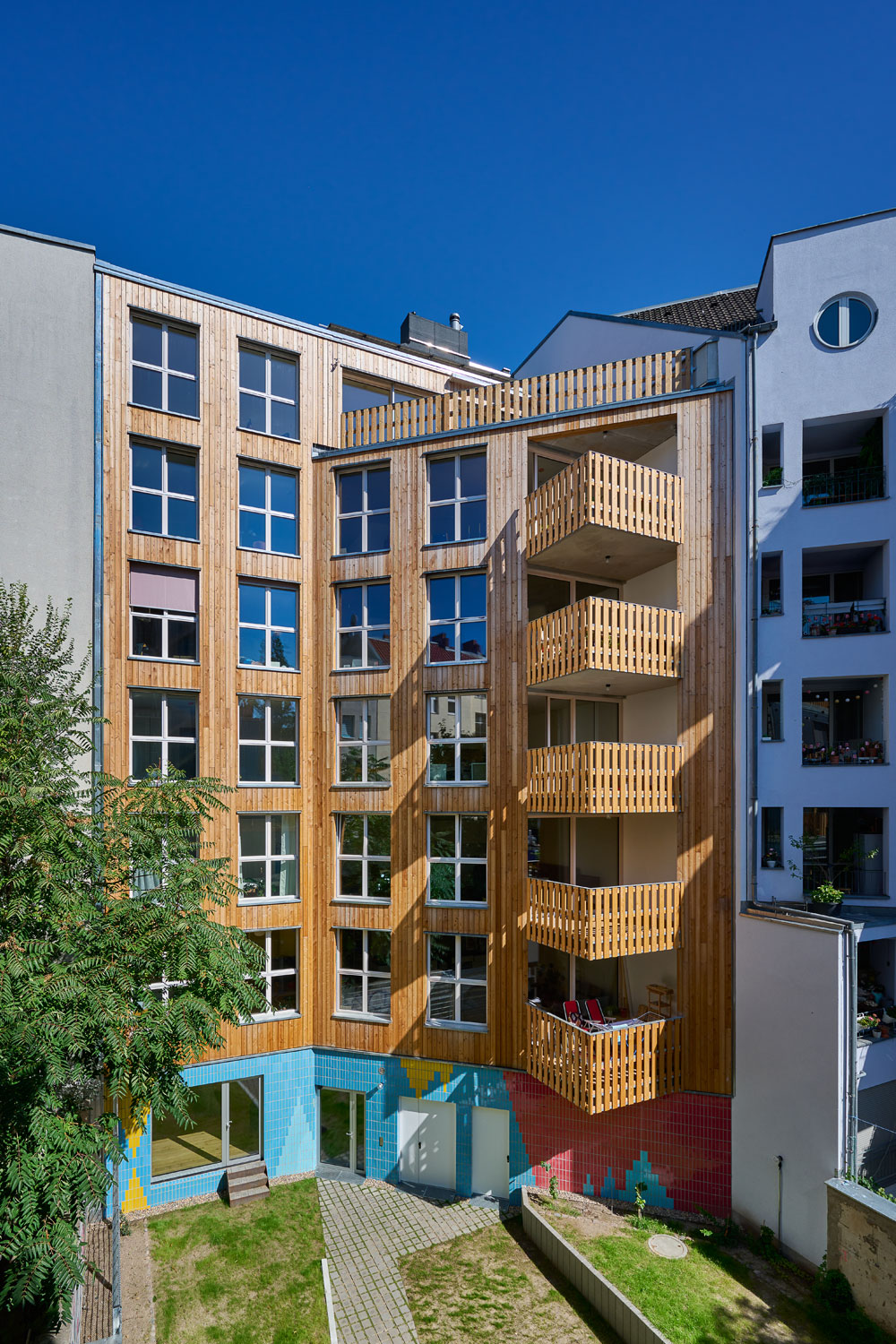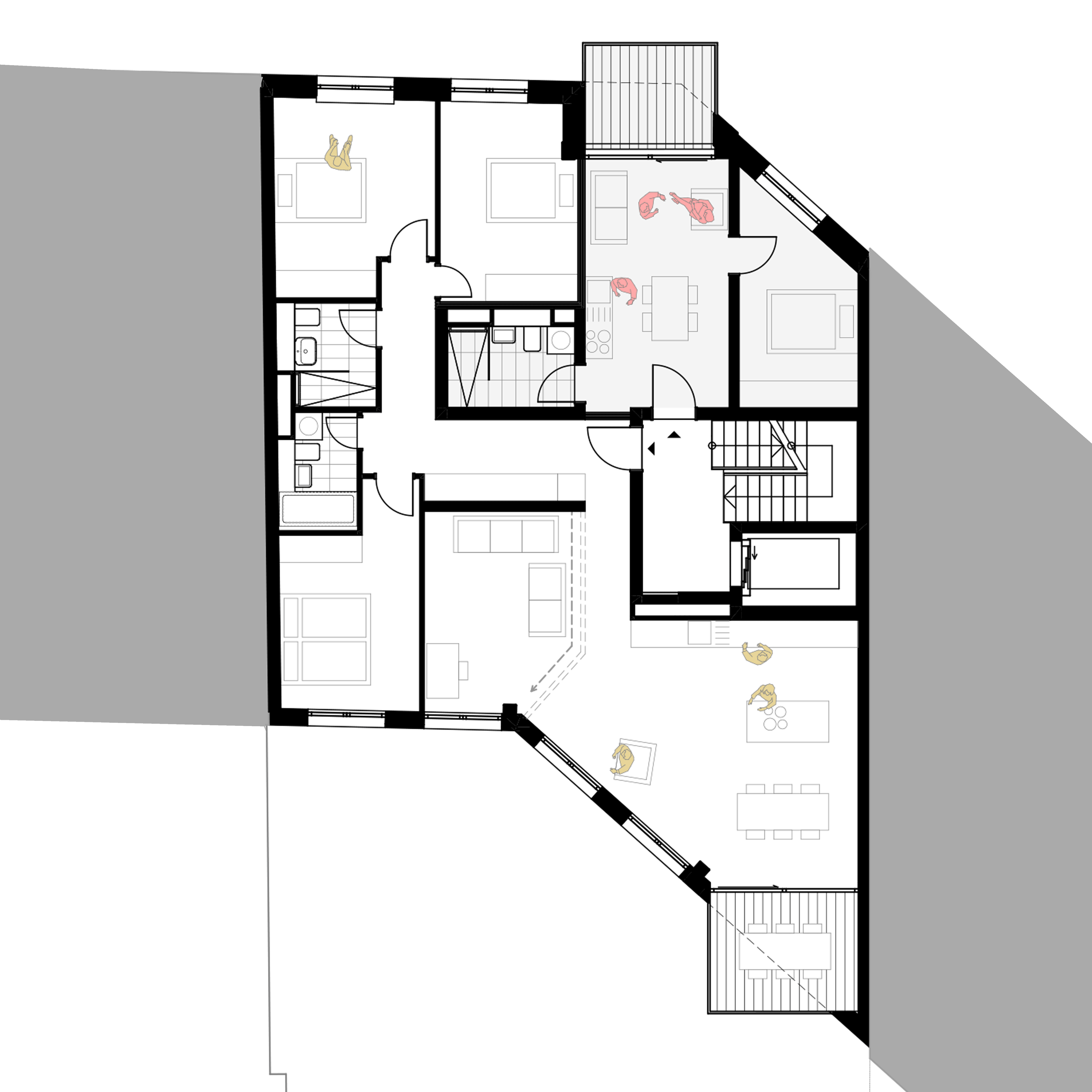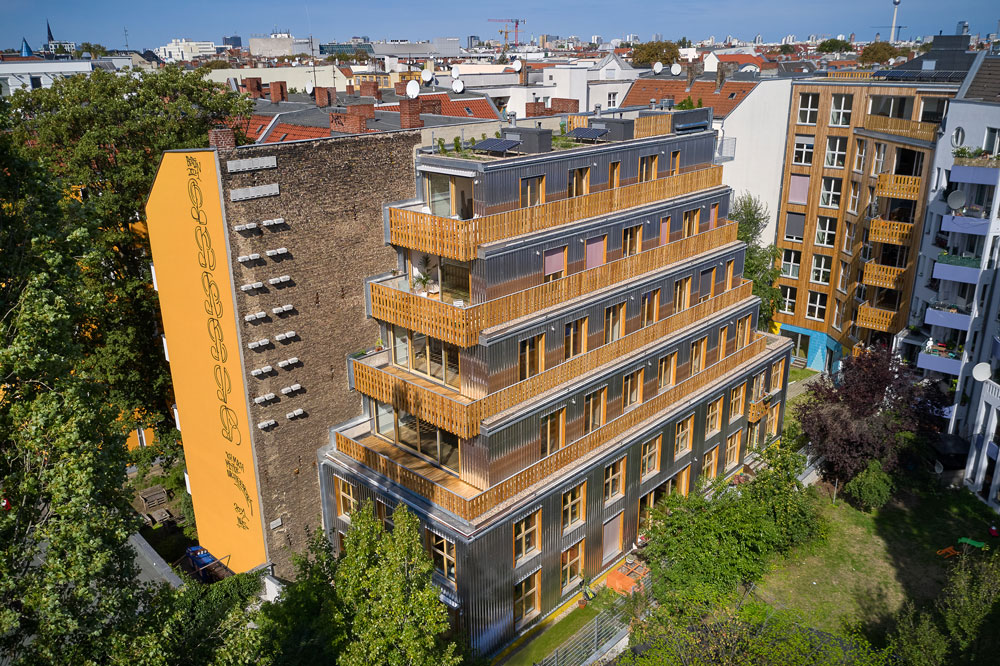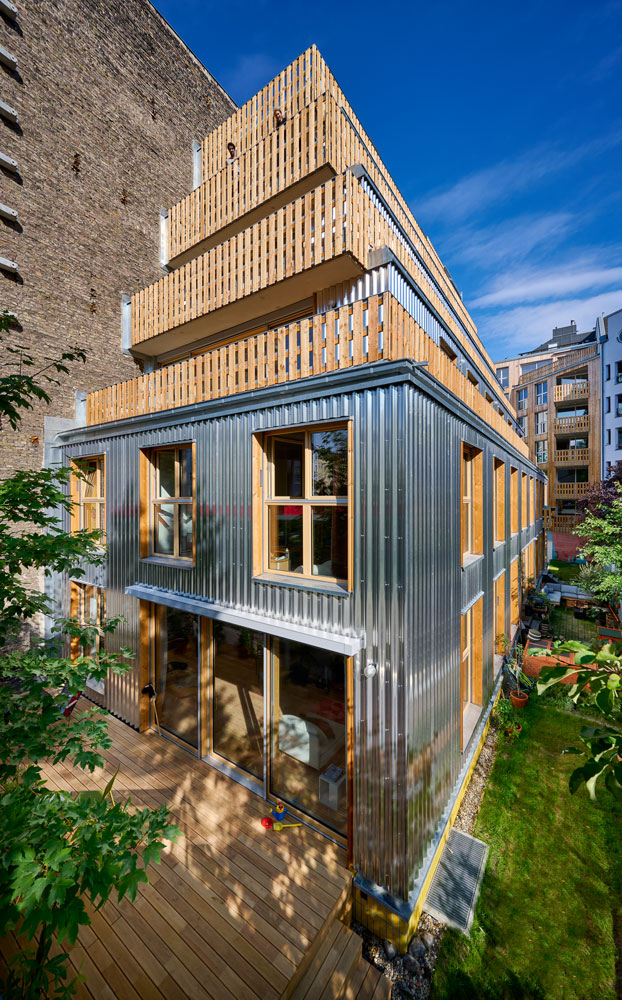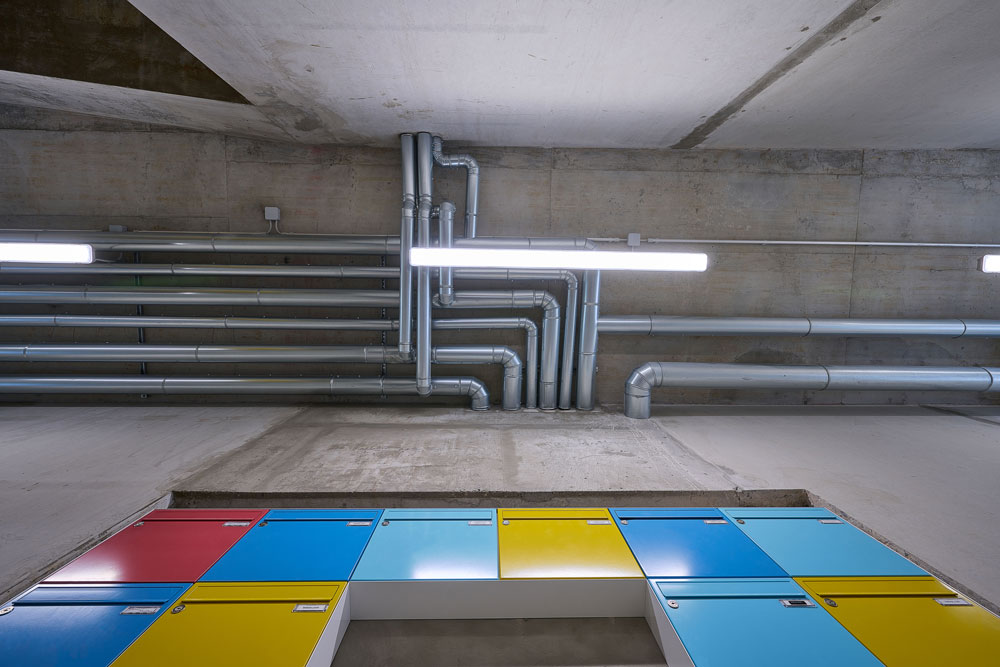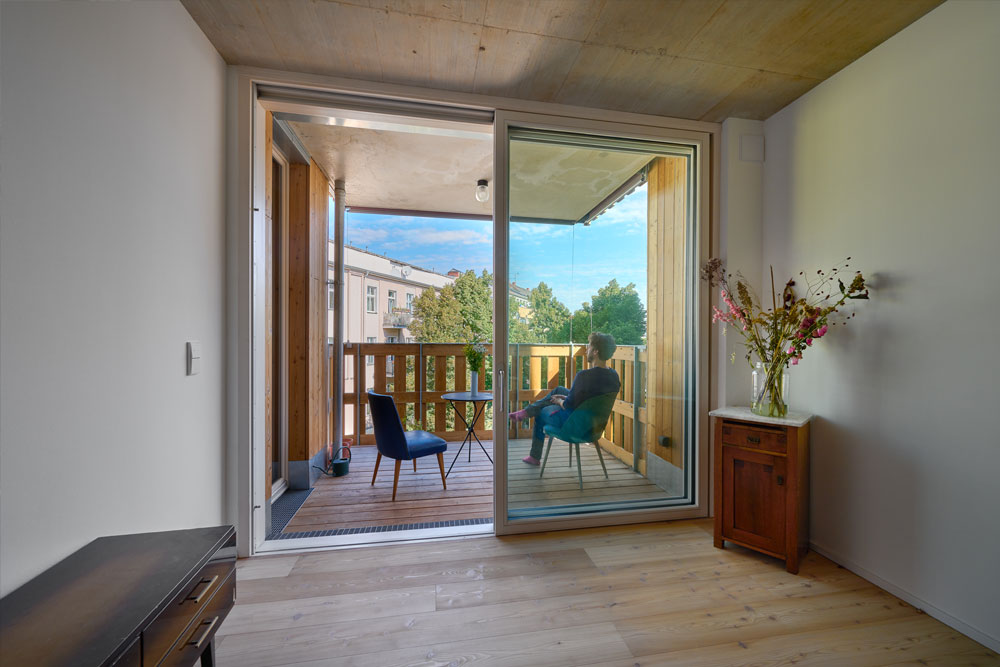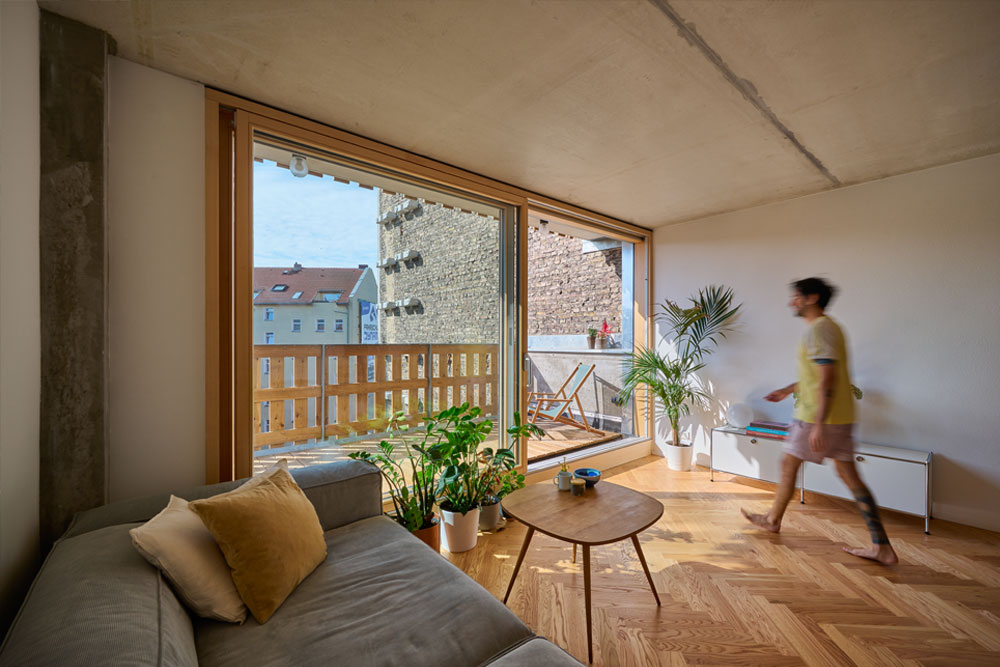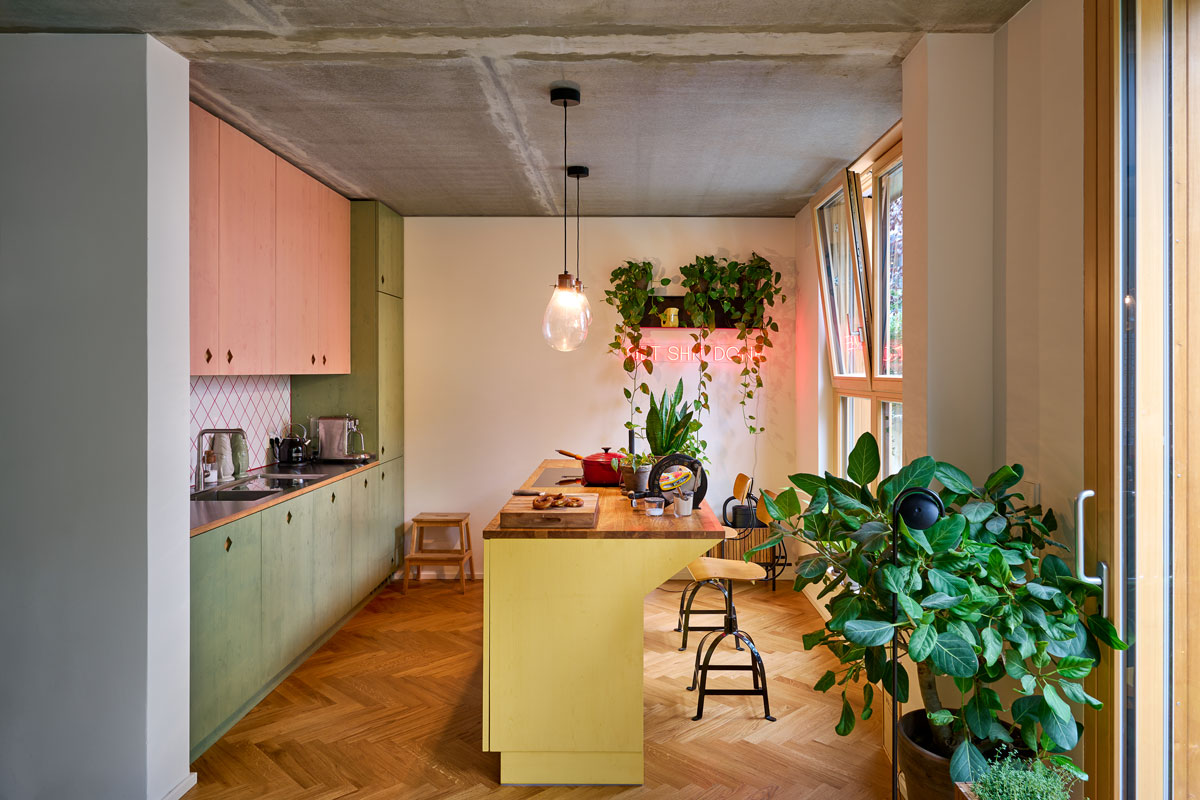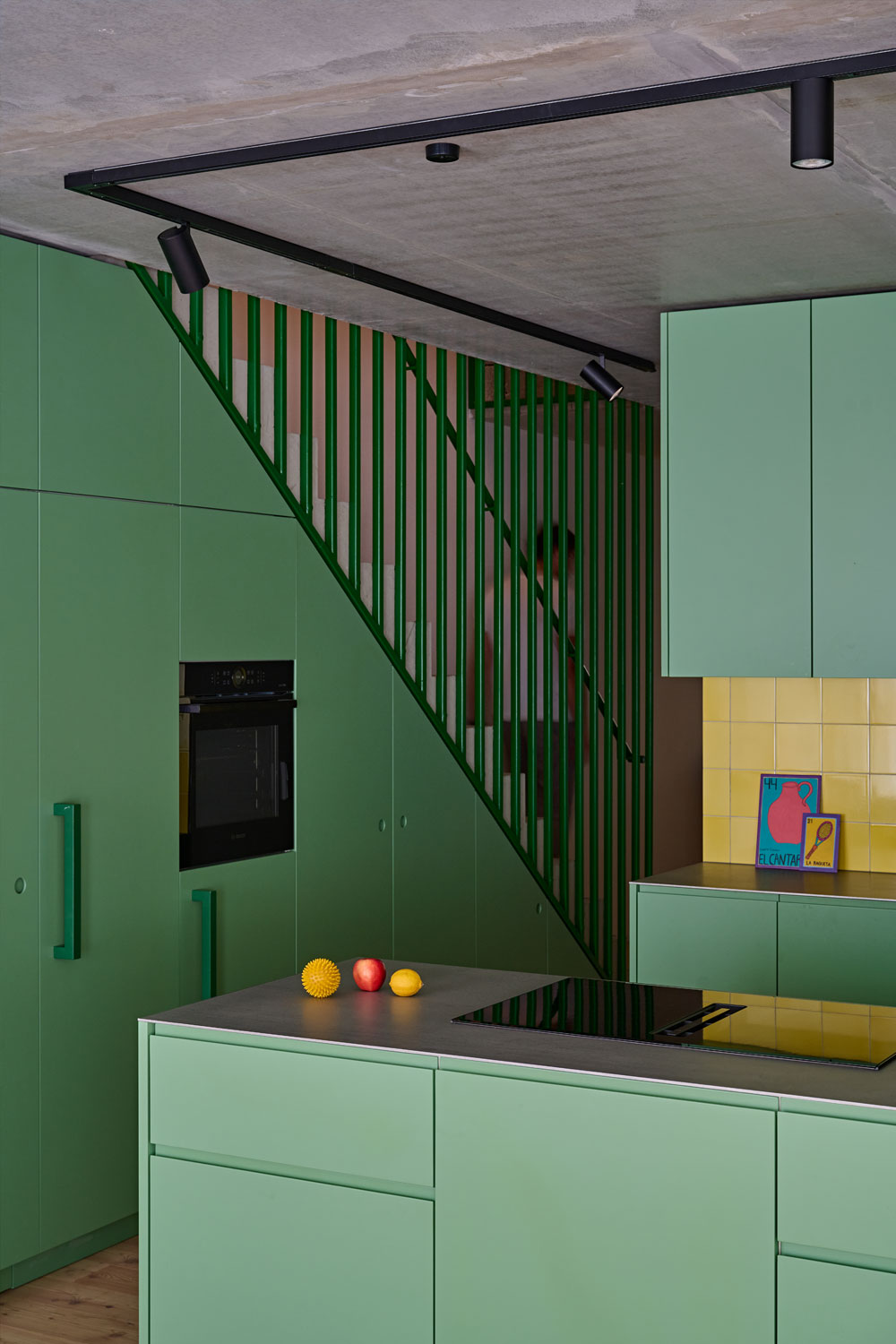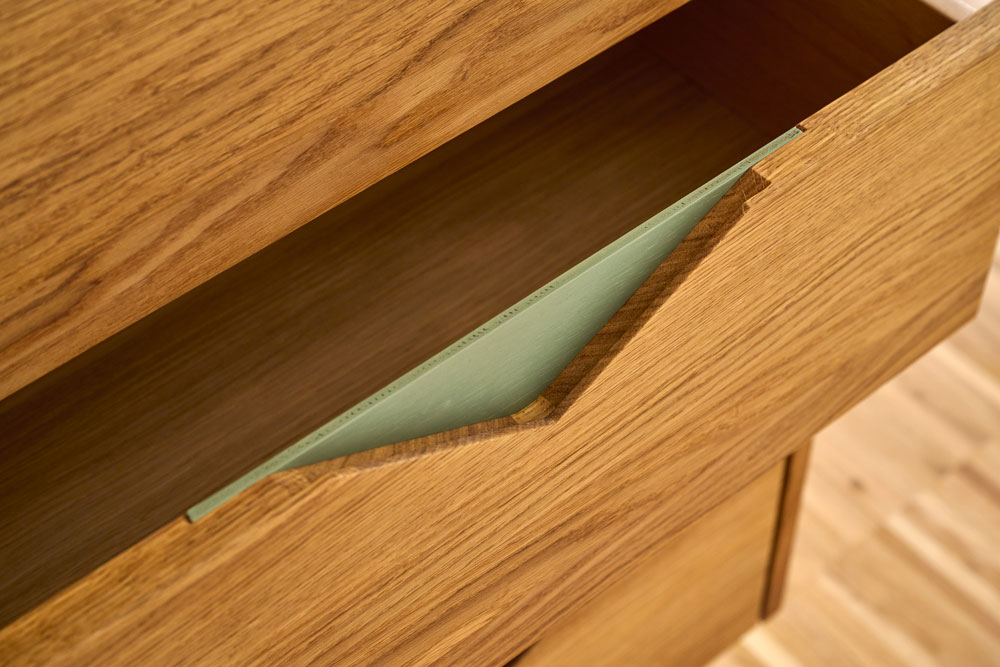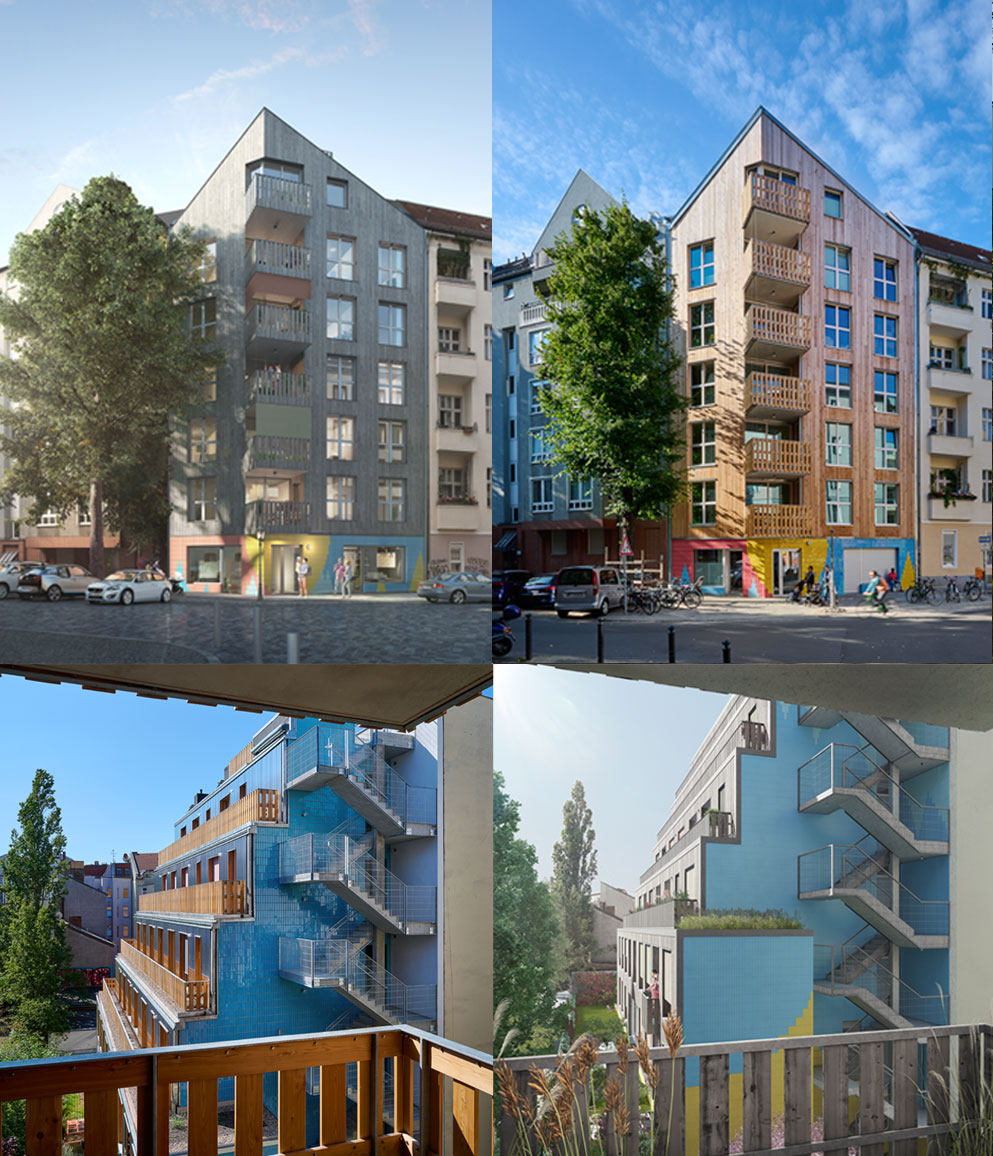Institut
für
unerschütterliche,unwiderstehliche,unbeschreibliche,unglaubliche,unterhaltsame,urbane,umfassende,unverbrauchte,umweltbewusste,umwerfende,unkonventionelle,urige,unschädliche,unfassbare,unnachahmliche,unkomplizierte,ultrageschmeidige,unerwartete,unwirtschaftliche,unvergleichliche,ungezogene,ungewöhnliche,unbeschwerte,unkonventionelle,unverbesserliche
Baukunst
Baugruppen
sind in Berlin eine sehr populäre Form, wenn es um die Schaffung von neuem Wohnraum geht. Mehrere Parteien schließen sich zusammen, bündeln ihre gemeinsamen Interessen und Finanzen und bauen gemeinsam ein oder mehrere Häuser. Das Schöne an Baugruppen? Die zukünftigen Eigentümer*innen sind am Prozess von Anfang an beteiligt und können auch auf Konzeption und Gestaltung Einfluss nehmen.
Der Blick in eine der Erdgeschosswohnungen des Gartenhauses bei Einbruch der Dunkelheit zeigt den schönen Übergang von Spiegelung zu Einblick durch die bei allen Wohnungen vorhandenen großen
Hebe-Schiebetüranlagen
aus Holz.

